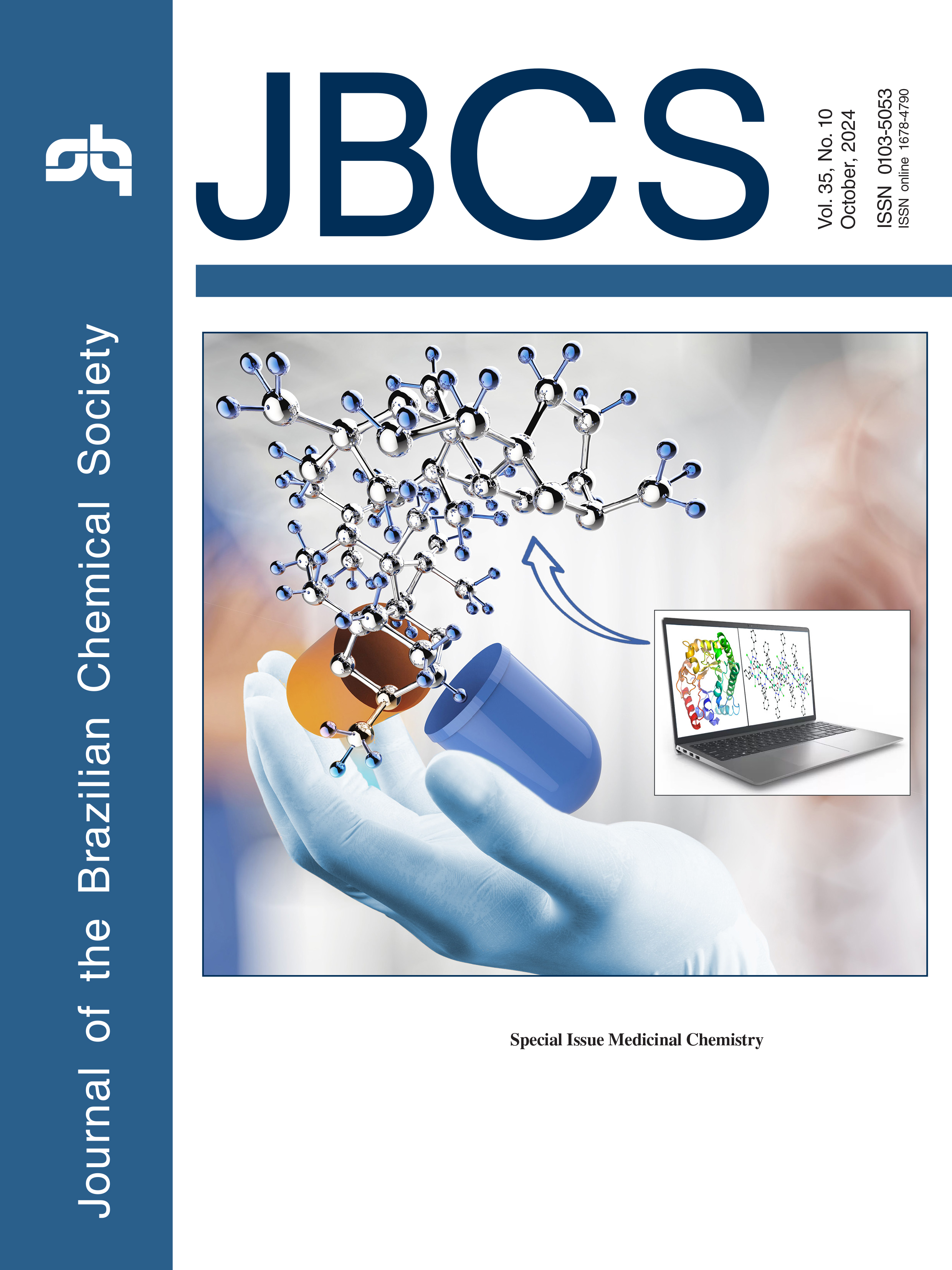vol. 35, No. 10, 2024
This special issue covers a range of recent and significant topics in Medicinal Chemistry, including host-guest interactions, advancements in drug discovery, synthesis and application of bioactive molecules, and treatments for neglected diseases. Additionally, it explores computational methods applied to Medicinal Chemistry, the importance of natural products, and the role of multicomponent reactions in synthesis. Medicinal Chemistry plays a vital role in improving human health and requires extensive interdisciplinary efforts. In the face of challenges to scientific understanding and acceptance, the resilience of medicinal chemists offers hope for the future, underscoring the need for ongoing support and investment in this field. Read more at Editorial.
Special Issue Medicinal Chemistry

Editorial J. Braz. Chem. Soc. 2024, 35(10), e-20240147, 1-2
Medicinal Chemistry in Times of Scientific Obscurantism and Denialism: Do We Have a Future?
Brenno A. D. Neto  ; Carlos Mauricio R. Sant'Anna
; Carlos Mauricio R. Sant'Anna
https://dx.doi.org/10.21577/0103-5053.20240147
Account J. Braz. Chem. Soc. 2024, 35(10), e-20240056, 1-16
Flavonoids as Inspiration for the Design and Synthesis of New Antiproliferative, Antiparasitic and Antiviral Compounds: An Account
Guilherme S. Caleffi  ; Alcides J. M. da Silva
; Alcides J. M. da Silva  ; Chaquip Daher Netto
; Chaquip Daher Netto  ; Jorge L. O. Domingos
; Jorge L. O. Domingos  ; Eduardo J. Salustiano
; Eduardo J. Salustiano  ;
;
Paulo R. R. Costa 
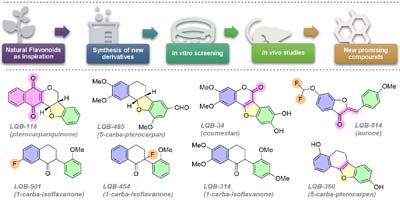
Modified flavonoids were synthesized and showed potent antiproliferative and antiparasitic activity in vitro and in vivo, and antiviral activity in vitro.
https://dx.doi.org/10.21577/0103-5053.20240056
J. Braz. Chem. Soc. 2024, 35(10), e-20240059, 1-13
LASSBio Chemical Library Diversity and FLT3 New Ligand Identification
Lucas S. Franco; Rodolfo C. Maia; Eliezer J. Barreiro 
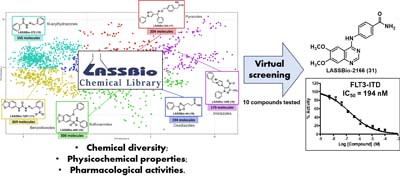
This account describes the LASSBio Chemical Library diversity and a virtual screening against feline McDonough sarcoma-like tyrosine kinase 3 (FLT3).
https://dx.doi.org/10.21577/0103-5053.20240059
Review J. Braz. Chem. Soc. 2024, 35(10), e-20240053, 1-21
Amidines: The Main Discoveries in the Synthesis and Anti-Leishmanial Effects of New Chemotherapeutic Agents
Cláudio E. Rodrigues-Santos  ; Maurício R. de Brito; Aurea Echevarria
; Maurício R. de Brito; Aurea Echevarria 
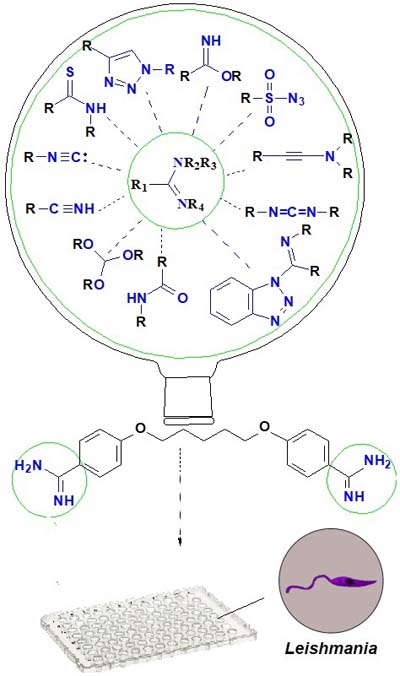
Mini review highlighting amidine derivatives: principal synthesis methods and anti-Leishmania activity results.
https://dx.doi.org/10.21577/0103-5053.20240053
J. Braz. Chem. Soc. 2024, 35(10), e-20240071, 1-34
Revisiting Nitroaromatic Drugs: Mechanisms of Bioactivation, Metabolism and Toxicity and Methods to Synthesize Nitroaromatic Fragments
Saulo T. Abreu  ; Luis Gabriel V. Gelves
; Luis Gabriel V. Gelves  ; Eliezer J. Barreiro
; Eliezer J. Barreiro  ; Lídia M. Lima
; Lídia M. Lima
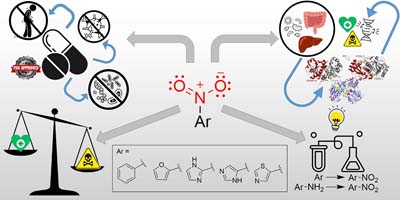
Nitroaromatic as drug: Food and Drug Administration (FDA) approval, mechanisms of bioactivation, metabolism and toxicity, and synthesis of nitroaromatic fragment by nitration and amine oxidation.
https://dx.doi.org/10.21577/0103-5053.20240071
J. Braz. Chem. Soc. 2024, 35(10), e-20240075, 1-33
Multicomponent Reactions in the Last 30 Years: How are we Today?
Henrique B. de Lima  ; Gustavo M. das Neves
; Gustavo M. das Neves  ; Itamar L. Gonçalves
; Itamar L. Gonçalves  ; Aloir A. Merlo
; Aloir A. Merlo  ; Vera L. Eifler-Lima
; Vera L. Eifler-Lima
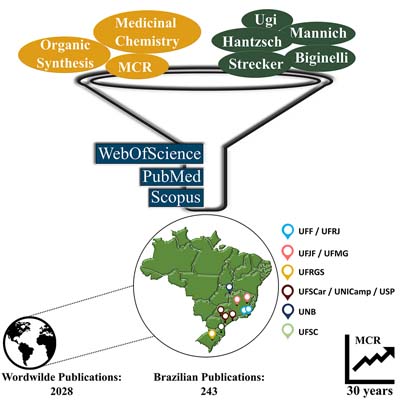
A bibliometric analysis was performed to map the research performed in Brazil on multicomponent reactions over a period of 30 years through a literature search.
https://dx.doi.org/10.21577/0103-5053.20240075
J. Braz. Chem. Soc. 2024, 35(10), e-20240085, 1-15
Seasoning to Kill: the Example of the Natural Amide Piperine and Its Potential in the Design of New Antiparasitic Drugs
Afonso S. M. M. Velez  ; Paulo Pitasse-Santos
; Paulo Pitasse-Santos  ; Leonardo Freire-de-Lima
; Leonardo Freire-de-Lima  ; Célio G. Freire-de-Lima
; Célio G. Freire-de-Lima  ; Debora Decoté-Ricardo
; Debora Decoté-Ricardo  ; Marco E. F. de Lima
; Marco E. F. de Lima

Piperine is a natural amide with an interesting chemical structure and promising activities against several parasitic diseases. It is a renewable natural product easily extracted from black pepper, one of the most important spices used worldwide.
https://dx.doi.org/10.21577/0103-5053.20240085
J. Braz. Chem. Soc. 2024, 35(10), e-20240091, 1-23
The Thin Line between Promiscuous and Privileged Structures in Medicinal Chemistry
Thayná A. Bibiano; Heber Victor Tolomeu  ; Pedro S. M. Pinheiro
; Pedro S. M. Pinheiro  ; Carlos Alberto M. Fraga
; Carlos Alberto M. Fraga
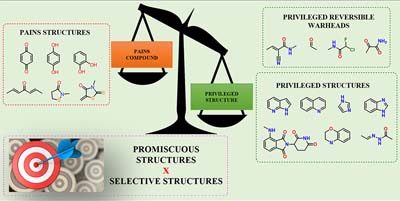
Enhancing the equilibrium between promiscuous and privileged structures in Medicinal Chemistry.
https://dx.doi.org/10.21577/0103-5053.20240091
J. Braz. Chem. Soc. 2024, 35(10), e-20240100, 1-19
Bioactive Amino-Quinazolines: Synthesis and Therapeutic Applications
Lucas S. Franco  ; Pedro S. M. Pinheiro
; Pedro S. M. Pinheiro  ; Maria Letícia C. Barbosa
; Maria Letícia C. Barbosa

This article reviews the synthesis and biological activities of the amino-quinazoline privileged structure over the last 30 years, focusing on the last decade.
https://dx.doi.org/10.21577/0103-5053.20240100
J. Braz. Chem. Soc. 2024, 35(10), e-20240102, 1-21
Intrinsically Disordered Malaria Antigens: An Overview of Structures, Dynamics and Molecular Simulation Opportunities
Pamella C. C. da Silva  ; Leandro Martínez
; Leandro Martínez
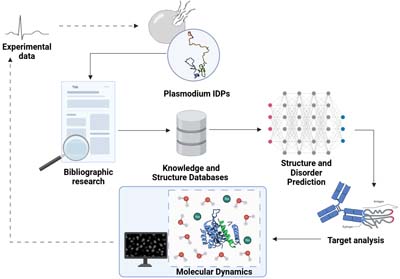
A bibliographical review of molecular dynamics enhanced sampling techniques for analysis of Plasmodium falciparum proteins and their implications for antibody binding.
https://dx.doi.org/10.21577/0103-5053.20240102
J. Braz. Chem. Soc. 2024, 35(10), e-20240103, 1-16
From Origin to Current Methods: An Overview of Molecular Modeling Applied to Medicinal Chemistry in the Last 30 Years
Vinícius N. Rocha; Carlos M. R. Sant'Anna
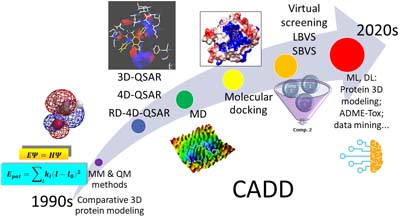
The image shows the evolution in the usage of Computer-Assisted Drug Design (CADD) methods during the last 30 years.
https://dx.doi.org/10.21577/0103-5053.20240103
J. Braz. Chem. Soc. 2024, 35(10), e-20240104, 1-21
Organometallics in Medicinal Chemistry: Antiparasitic Agents
How to cite this article

Metallocenes, "half sandwich" M-arenes and metal carbonyls are potential drugs against malaria and neglected diseases caused by trypanosomatid parasites and parasitic helminths.
https://dx.doi.org/10.21577/0103-5053.20240104
J. Braz. Chem. Soc. 2024, 35(10), e-20240107, 1-13
30 Years of Kinase Inhibitors: A Historical Overview and some Brazilian Contributions
Júlia G. B. Pedreira  ; Stefan Laufer
; Stefan Laufer

This work reviews protein kinase inhibitors of the last 30 years and highlights contributions from Brazilian researchers.
https://dx.doi.org/10.21577/0103-5053.20240107
J. Braz. Chem. Soc. 2024, 35(10), e-20240109, 1-35
Advancements in the Synthesis and Biological Properties of Carboranes and High‑Boron Related Compounds: A Comprehensive Exploration with Emphasis on BNCT Applications
How to cite this article

The advancements in both chemistry and the biological behavior, with a focus on boron neutron capture therapy involving specific polyhedral boron clusters, are examined.
https://dx.doi.org/10.21577/0103-5053.20240109
J. Braz. Chem. Soc. 2024, 35(10), e-20240112, 1-29
Structure-Based Virtual Screening: Successes and Pitfalls
Adenilson G. Lima; André B. Penteado; Jullyane G. de Jesus; Vanessa J. R. de Paula; Witor R. Ferraz  ; Gustavo H. G. Trossini
; Gustavo H. G. Trossini
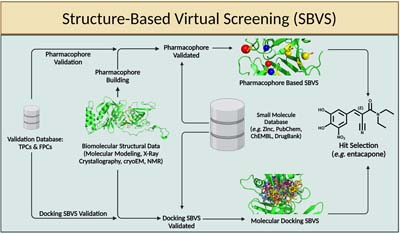
Workflow diagram of a structure-based virtual screening (SBVS) process showing the two approaches discussed in this work.
https://dx.doi.org/10.21577/0103-5053.20240112
J. Braz. Chem. Soc. 2024, 35(10), e-20240115, 1-26
Thirty Years in the Design and Development of Cruzain Inhibitors
Gabriel Jasinski; María Florencia Martini; Albertina G. Moglioni
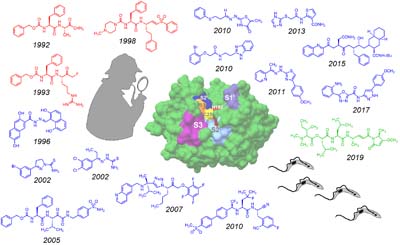
This review presents the main developments in inhibitors of cruzipain/cruzain, a crucial enzyme in the life cycle of Trypanosoma cruzi, the etiological agent of Chagas disease, from the 1990s to the present.
https://dx.doi.org/10.21577/0103-5053.20240115
J. Braz. Chem. Soc. 2024, 35(10), e-20240119, 1-15
Status and Prospects of Molecular Simulations for Drug Discovery
Hugo Verli  ; Chris Oostenbrink
; Chris Oostenbrink

Evolution of molecular simulations applications in drug-discovery in the past 30 years.
https://dx.doi.org/10.21577/0103-5053.20240119
J. Braz. Chem. Soc. 2024, 35(10), e-20240129, 1-25
Analysis of Cannabinoids in Medicinal Cannabis Products: A Comprehensive Review
Julieth G. Herrera  ; Larissa A. Rolim
; Larissa A. Rolim  ; Ricardo S. Honorato
; Ricardo S. Honorato  ; Maria Fernanda Pimentel
; Maria Fernanda Pimentel
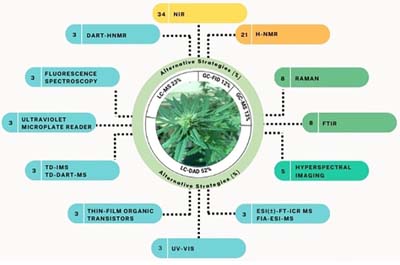
Chromatographic techniques and alternative strategies for qualitative and quantitative analysis of cannabinoids in medicinal cannabis products and cannabis extracts.
https://dx.doi.org/10.21577/0103-5053.20240129
J. Braz. Chem. Soc. 2024, 35(10), e-20240155, 1-16
Analogues and Derivatives of Cannabidiol: Pharmacological Insights and Recent Efforts in the Search for Novel Drug Candidates for Inflammation and Pain - a Brief Review Over the Past 3 Decades
Mikaela L. de Souza; Graziella R. R. Franco; Larissa E. Massuda; Vanessa S. Gontijo; Claudio Viegas Jr.
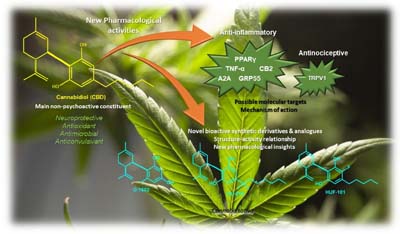
Cannabidiol (CBD) and its synthetic derivatives and analogues have been investigated for decades due to their medicinal uses as neuroprotective, anti-convulsive, antinociceptive, and anti-inflammatory, aimed at clarifying the mechanisms of action underlying their pharmacology and contribute to the development of innovative drugs.
https://dx.doi.org/10.21577/0103-5053.20240155
J. Braz. Chem. Soc. 2024, 35(10), e-20240159, 1-18
Drug Repositioning and Artificial Intelligence: Is It a Promising Approach to be Used for Neglected Diseases?
Fernanda Bongiovani; Marcos A. Ferreira-Junior  ; Soraya S. Santos
; Soraya S. Santos  ; Jeanine G. Vargas
; Jeanine G. Vargas  ; Elizabeth I. A. Ferreira
; Elizabeth I. A. Ferreira

Relationship between drug repositioning, artificial intelligence with essential participation of human beings, generating molecules which could turn into medicines.
https://dx.doi.org/10.21577/0103-5053.20240159
J. Braz. Chem. Soc. 2024, 35(10), e-20240160, 1-31
The Discovery of Protheolysis Targeting Chimeras (PROTACs), Evolution, Design and Perspectives in Modulating Inflammatory Diseases
Lucas Caruso  ; Thiago M. Pereira
; Thiago M. Pereira  ; Arthur E. Kümmerle
; Arthur E. Kümmerle
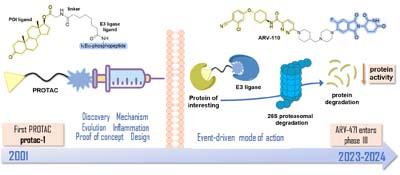
How much PROTACs (protheolysis targeting chimeras) can change the drug discovery? Since its discovery in 2001, a huge evolution has been done in terms of mechanisms, proof of concepts and design. A new PROTAC drug can be one step from the market, with ARV-471 that just entered in phase III clinical trials.
https://dx.doi.org/10.21577/0103-5053.20240160
J. Braz. Chem. Soc. 2024, 35(10), e-20240168, 1-21
The Interplay between Protein Frustration and Hotspot Formation
Thamires Q. Froes  ; Marcelo S. Castilho
; Marcelo S. Castilho

Localized protein frustration is higher around druggable hotspots, partially explaining their origin and suggesting innovative hit-to-lead strategies.
https://dx.doi.org/10.21577/0103-5053.20240168
Articles J. Braz. Chem. Soc. 2024, 35(10), e-20240043, 1-11
Interactive Profile between 1,4-Naphthoquinone Derivatives and Human Serum Albumin
Romulo C. Ferreira; Otávio Augusto Chaves  ; Cosme Henrique C. S. de Oliveira; Vitor Francisco Ferreira
; Cosme Henrique C. S. de Oliveira; Vitor Francisco Ferreira  ; Sabrina B. Ferreira; Carlos Serpa; Dari Cesarin-Sobrinho; José Carlos Netto-Ferreira
; Sabrina B. Ferreira; Carlos Serpa; Dari Cesarin-Sobrinho; José Carlos Netto-Ferreira
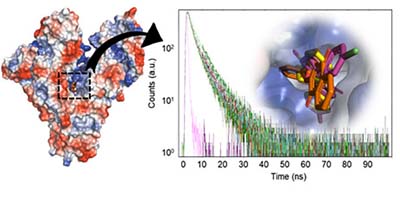
The 1,4-naphthoquinones interact moderately into a positive electrostatic pocket of human serum albumin (site I) via ground-state association.
https://dx.doi.org/10.21577/0103-5053.20240043
J. Braz. Chem. Soc. 2024, 35(10), e-20240136, 1-9
Interaction of a Triruthenium ortho-Metallated Phenazine with Cytochrome P450 Enzymes
Luis Guilherme A. do Nascimento  ; Maike F. S. Barbetta
; Maike F. S. Barbetta  ; Otávio A. Chaves
; Otávio A. Chaves  ; Anderson R. M. de Oliveira
; Anderson R. M. de Oliveira  ; Sofia Nikolaou
; Sofia Nikolaou
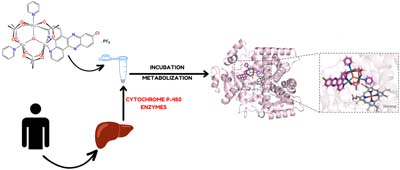
[Ru3O(CH3COO)5(py)2(dppzCl)]PF6 (py = pyridine; dppz-Cl = 7-chlorodipyrido[3,2-a:2',3'-c]phenazine) is metabolized by human cytochrome P450 enzymes when incubated with human liver microsomes.
https://dx.doi.org/10.21577/0103-5053.20240136
Online version ISSN 1678-4790 Printed version ISSN 0103-5053
Journal of the Brazilian Chemical Society
JBCS Editorial and Publishing Office
University of Campinas - UNICAMP
13083-970 Campinas-SP, Brazil
Free access










